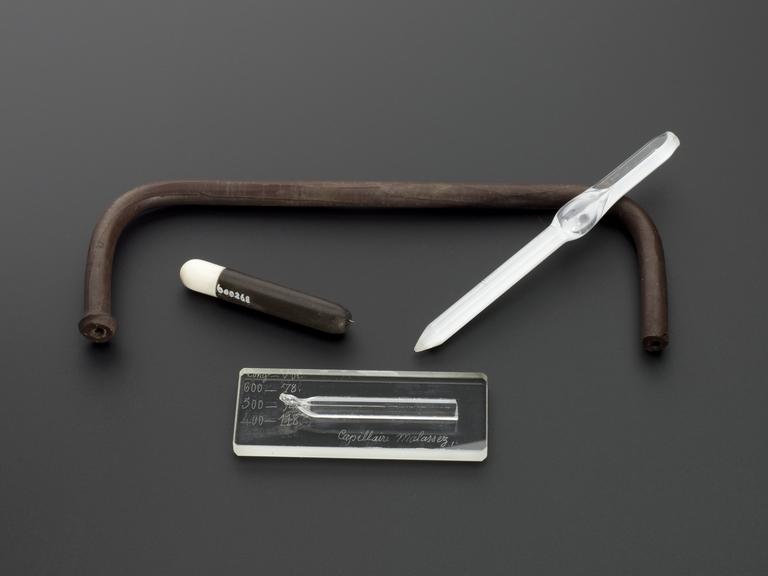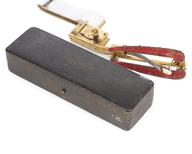

The first haemacytometer with leather case, described by L.C. Malassez, in 1874, French
This early haemacytometer is a simple device. It consists of a microscope slide marked into squares. A blood sample was diluted and placed on the slide. The red cells in the squares are then counted through a microscope. An increase or decrease in blood cells in the blood can indicate disease within the body. A low level of red blood cells is called anemia. A high level of red blood cells is called Polycythemia. The haemacytometer was devised by French physiologist Louis-Charles Malassez. This example is the original instrument described by Malassez. It was made by Verick in Paris.
Details
- Category:
- Clinical Diagnosis
- Collection:
- Sir Henry Wellcome's Museum Collection
- Object Number:
- A600268
- Materials:
- case, leather
- Measurements:
-
overall: 5 mm x 130 mm x 55 mm,
- type:
- haemacytometer
- credit:
- Wellcome Trust (Purchased from Stevens)






